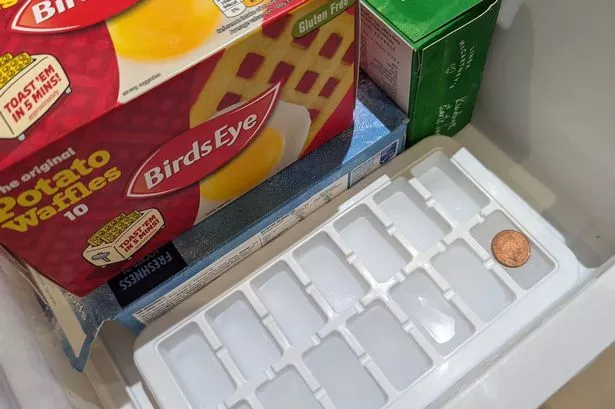The coin-in-the-freezer trick has been hailed as a food lifesaverGet daily celeb exclusives and behind the scenes house tours direct to your inboxMore Newsletters SubscribePlease enter a valid emailSomething went wrong, please try again later.More NewslettersWe use your sign-up to provide content in ways you’ve consented to and improve our understanding of you. This may include adverts from us and third parties based on our knowledge of you. More infoThank you for subscribing!We have more newslettersShow me See OurPrivacy Notice See OurPrivacy Notice×Group 28 Get daily celeb exclusives and behind the scenes house tours direct to your inboxInvalid emailSomething went wrong, please try again later.Sign UpNo thanks, closeWe use your sign-up to provide content in ways you’ve consented to and improve our understanding of you. This may include adverts from us and third parties based on our knowledge of you. More info×Group 28Thank you for subscribing!We have more newslettersShow MeNo thanks, closeSee our
Privacy NoticeFreezers exist to keep our food ice cold, right? But what if they go on the blink or get struck by a power cut while you’re out? Food including meat, poultry, seafood, eggs and more can rise to a temperature that means they need to be tossed, rather than turned into what could be a dangerous dinner. But if you’ve been away it’s hard to know whether your perishable food’s gone on the turn and become a health hazard – especially if it’s defrosted and sat in ‘danger zone’ temperatures where bacteria can grow – then frozen up again. This can happen if the electricity goes out or there’s a fault that nobody has noticed.
All you need is an ice-cube tray and a small coin like a penny
Enter the coin-in-the-freezer trick, which can indicate whether your freezer’s stayed, well, freezing while you’ve been away – and it could barely be more simple. To check it actually did work, OK! gave it a go. This trick originated in the US, the home of supersize fridges, as the coin in a cup technique and many swear by it as a way of making sure food hasn’t gone bad when you weren’t looking. However, it required keeping a mug in the freezer and no self-respecting Brit keeps a spare centimetre of space among the boxes of potato waffles and Birds Eye chicken grills, so we came up with a UK variant. For our space-saving version all you need is the humble ice-cube tray and a small coin – a 1p or 5p is ideal. Simply take the tray full of frozen ice and pop the coin on top of one of its compartments and leave it in the freezer. Jam it in alongside the old ice cream and that tupperware container full of unidentified brown sludge that’s been there since the Tony Blair government and leave it in peace. Now you don’t need do anything more. If the coin is still sitting atop the ice each time you return, the freezer is in tip-top condition and your food is safe. Sign up to OK!’s daily newsletter to get updates sent to your inbox for free
Our 1p coin started out sitting on top of the ice – indicating all is well
(Image: OK.co.uk)
But if you find Her Majesty under the ice, something is badly wrong
(Image: OK.co.uk)
However, if the coin is no longer sitting on top and is frozen within the ice, that’s a major warning sign that your food should be at best approached with caution – because the ice has at one time melted due to a fault, a power cut or something else that needs you investigate. When we tried it, it worked perfectly, with the coin frozen in the tray when left in a freezer that was turned off and then turned on again. Of course, this was just a test – our potato waffles were safe and well. The ‘danger zone’ for food is the temperature range between 8C and 60C, where food is most likely to grow harmful bacteria. For reference, room temperature tends to be somewhere about 18-20C. The good news is, it’s quite hard for a freezer to drop in temperature quickly. If the door is closed, the food inside should stay within an acceptable temperature range for 24 hours half full, or 48 hours totally full. However, meat, chicken, seafood, soft cheeses and milk should go in the bin if their temperature it at 4C or above for more than four hours and if it’s in the ‘danger zone’ it may be best to chuck it out without a second thought. That’s something the coin-in-the-freezer trick should be able to tell you – and all for just 1p.Story SavedYou can find this story in My Bookmarks.Or by navigating to the user icon in the top right.Follow OK! MagazineFacebookTwitterCommentMore OnFood












